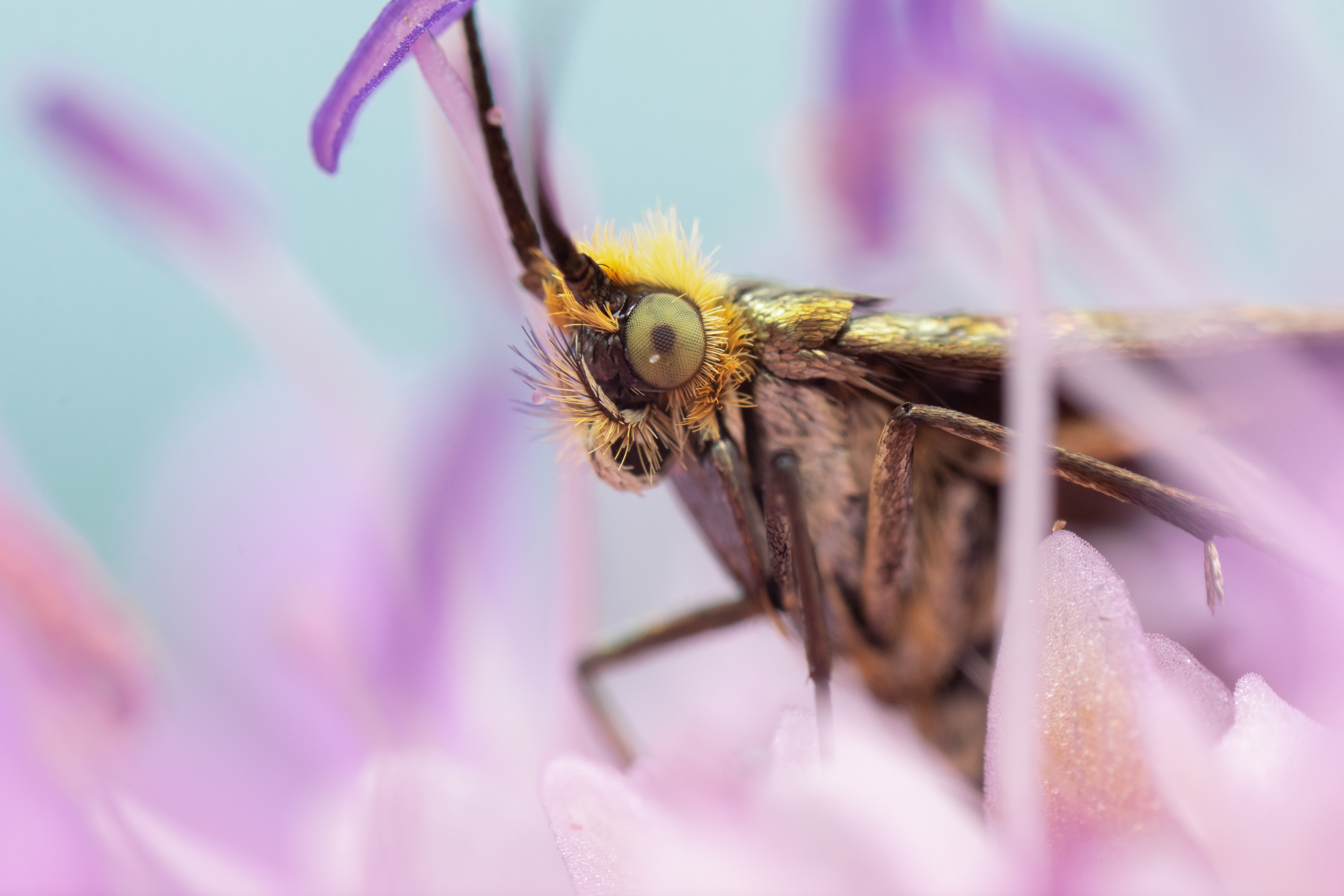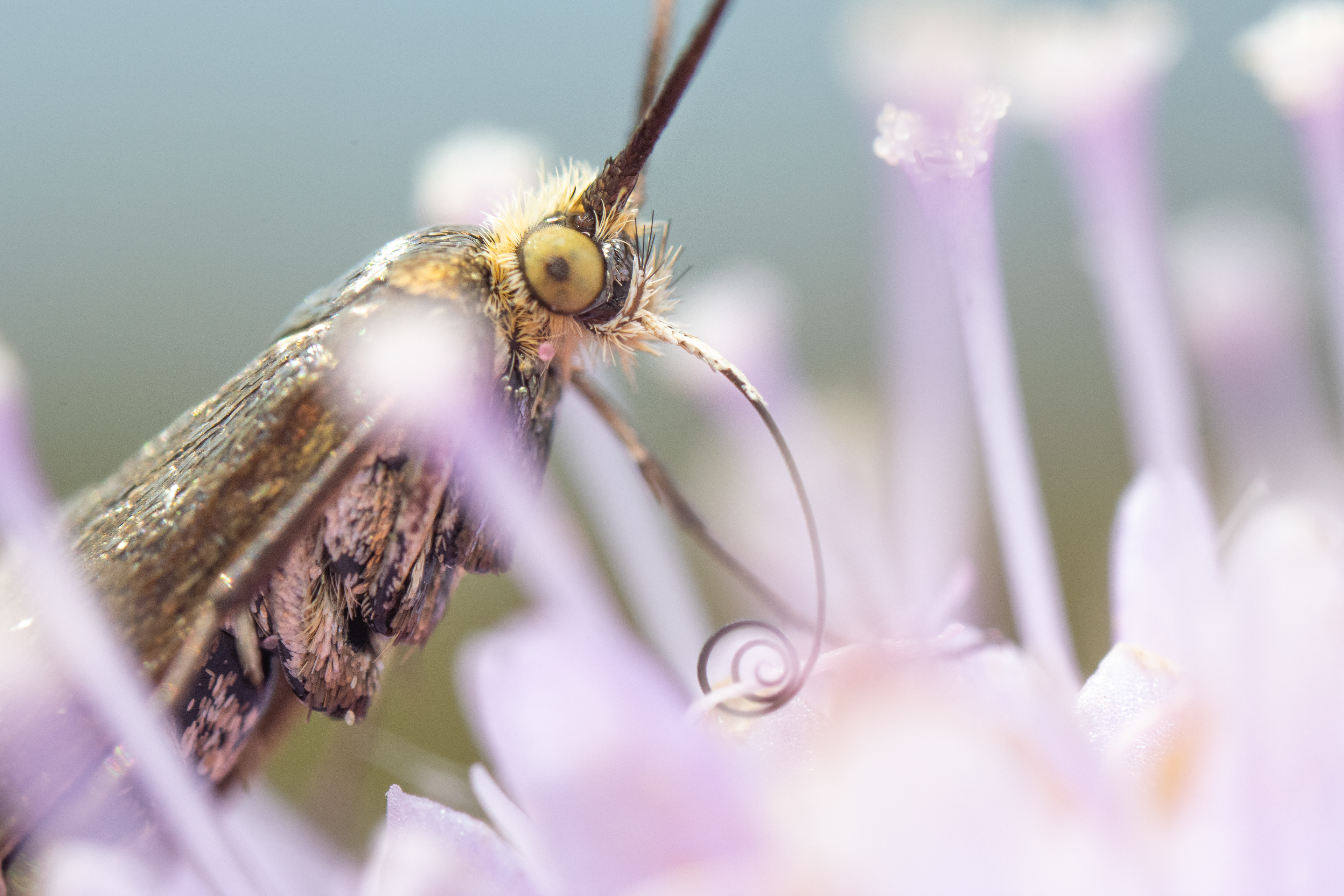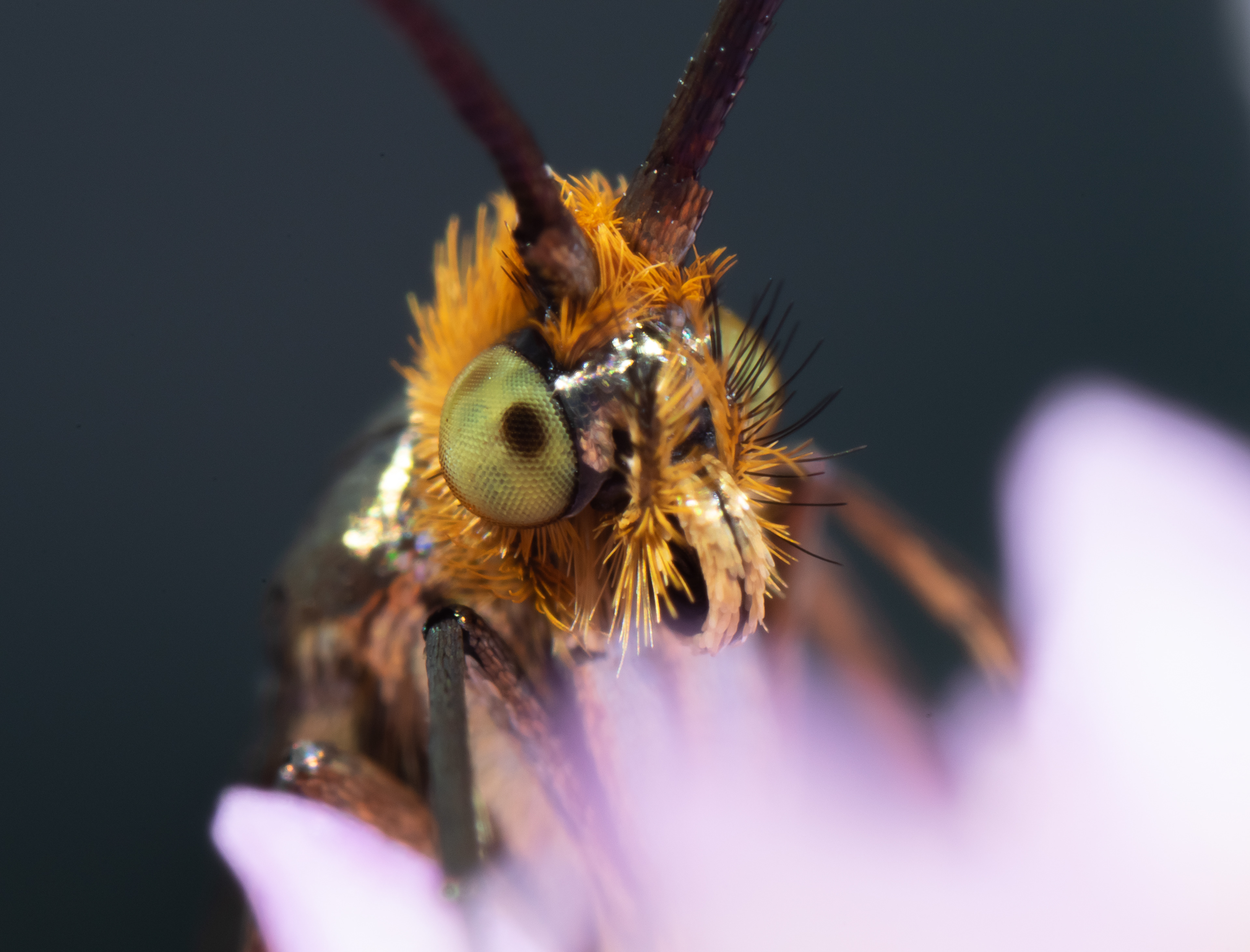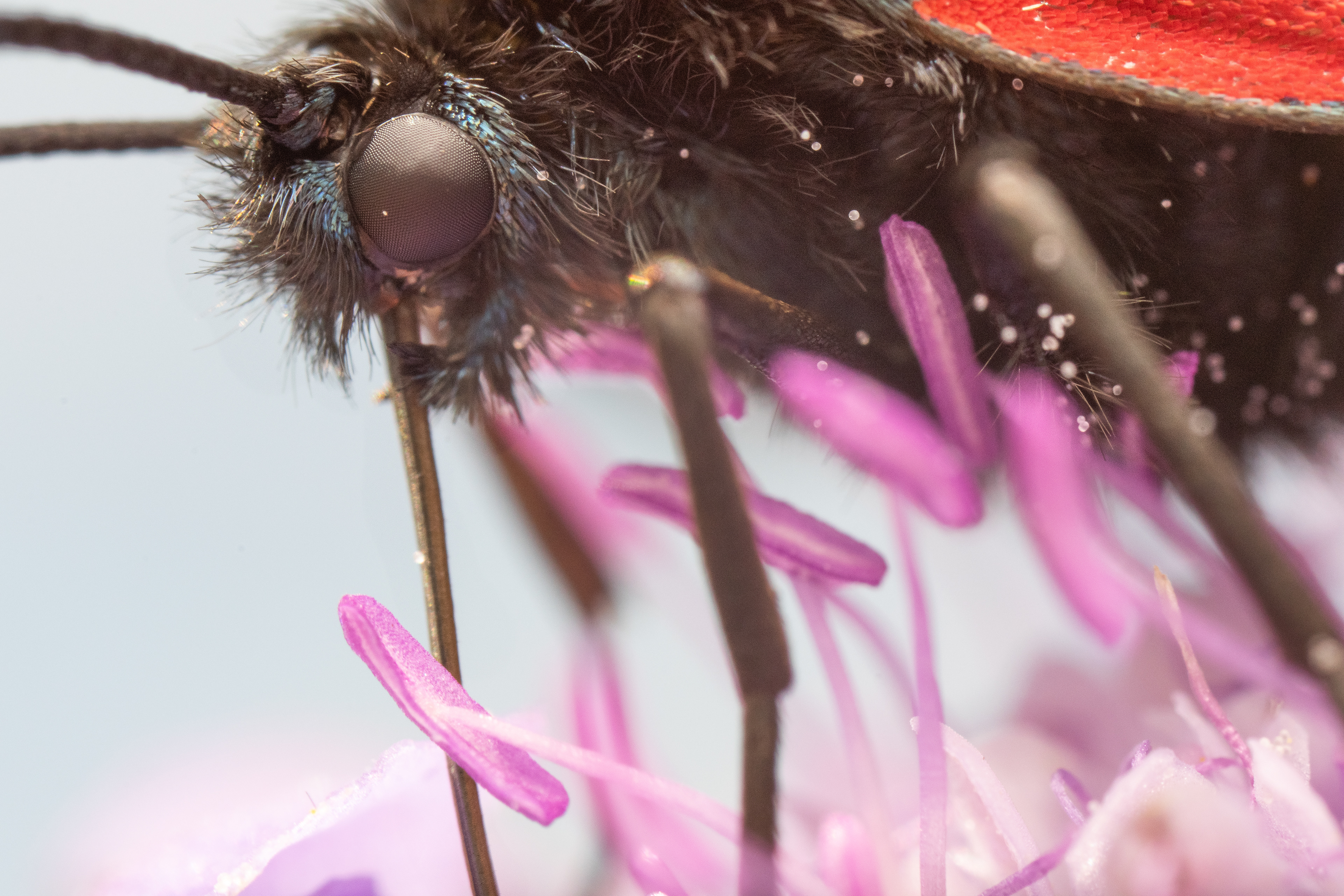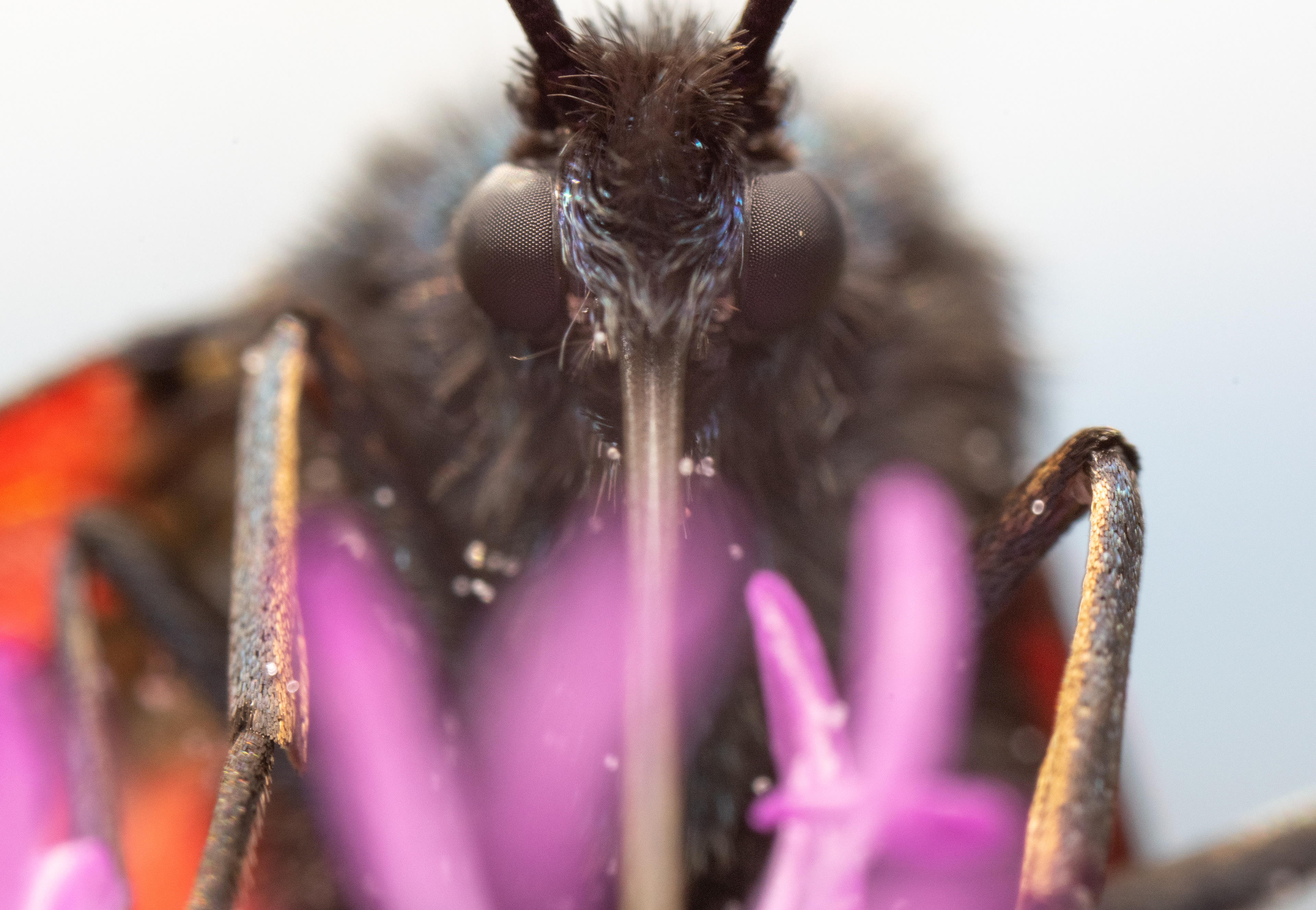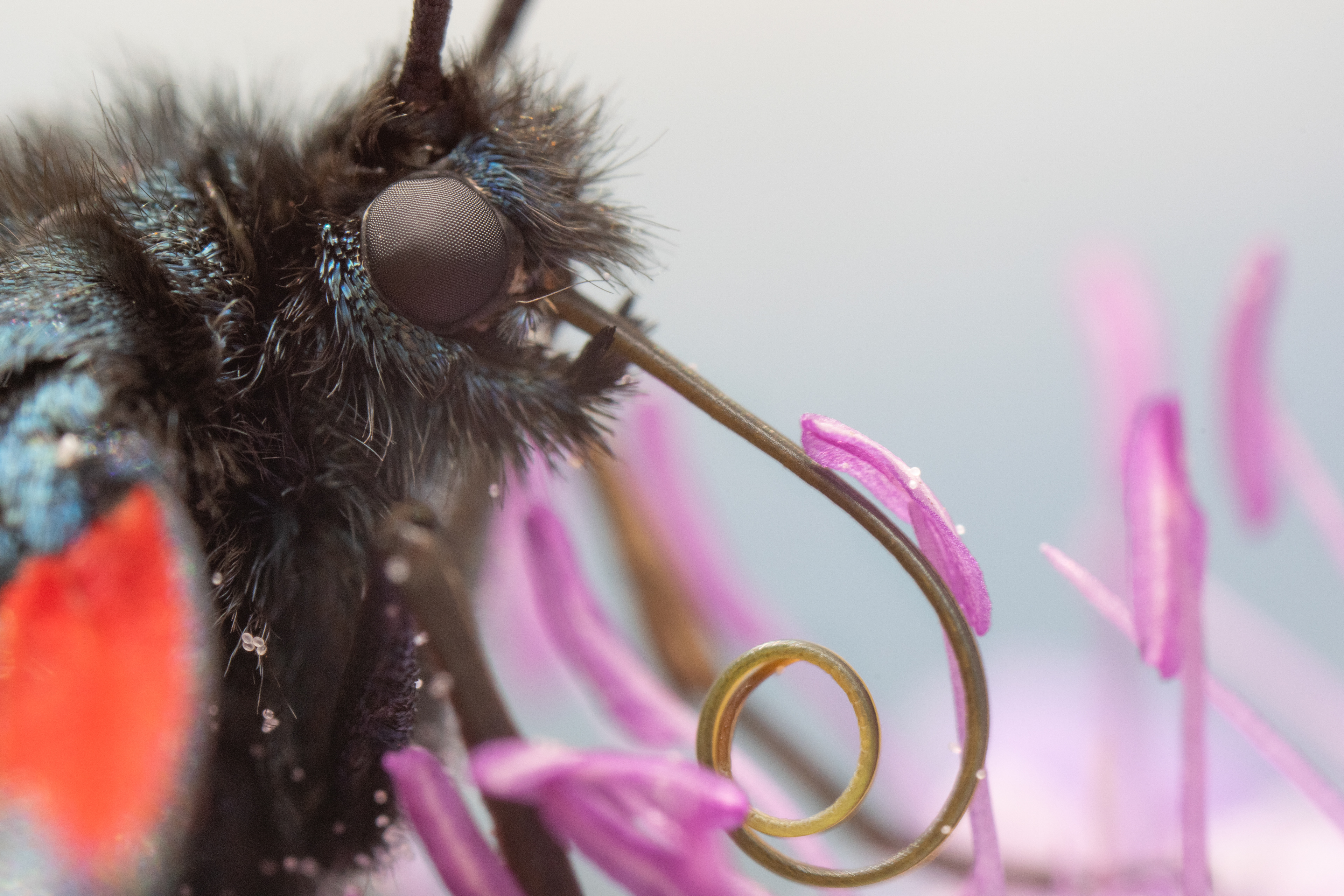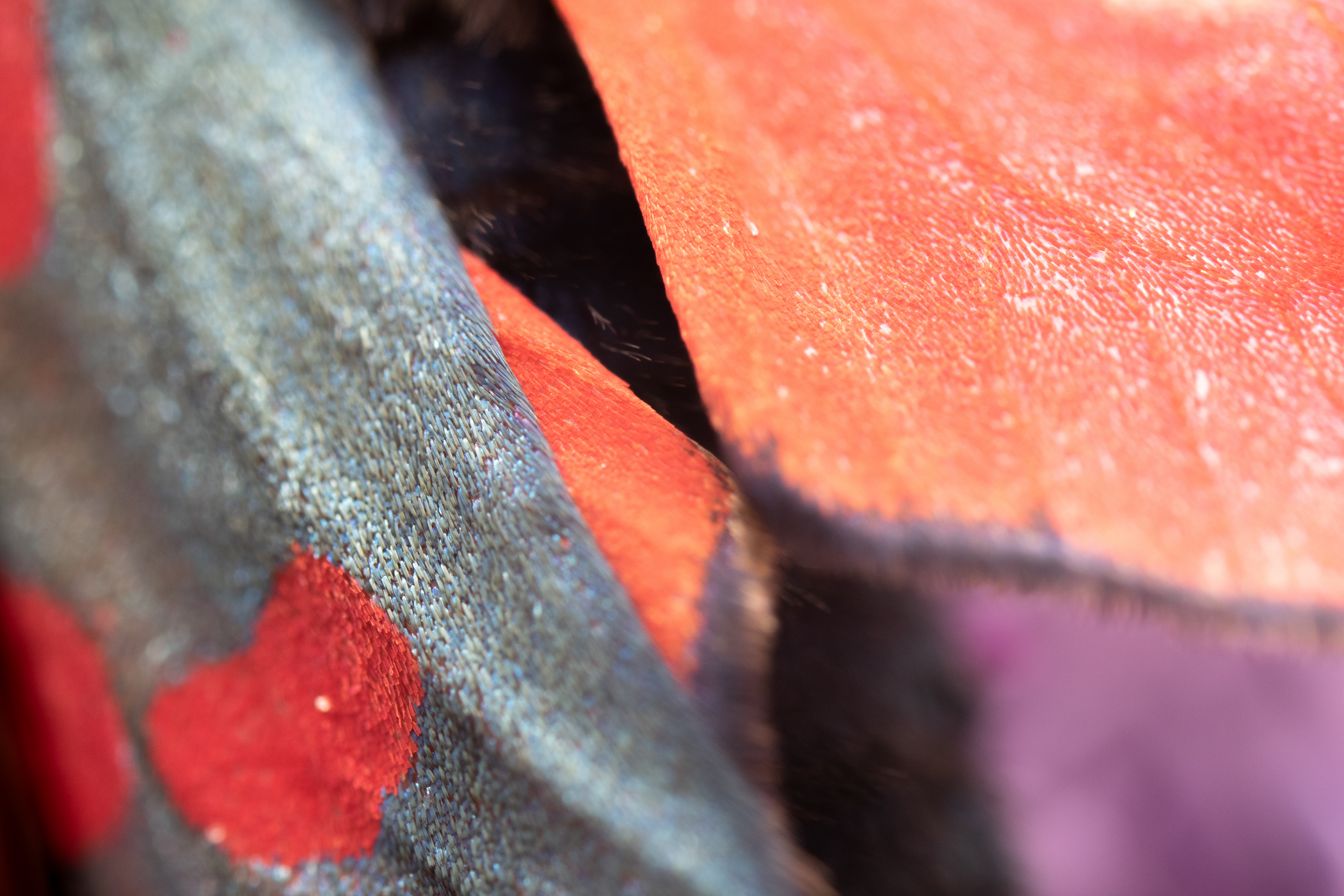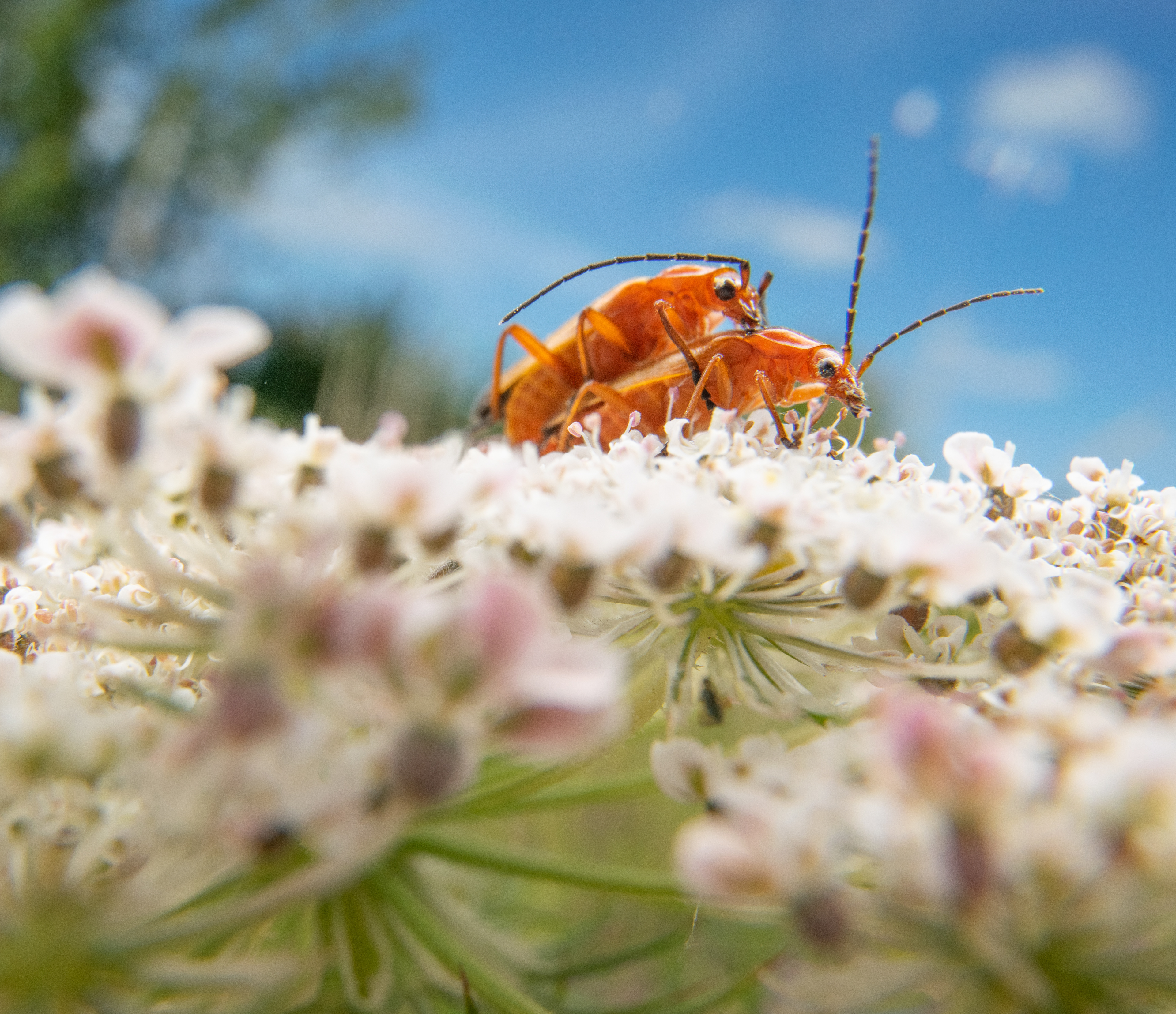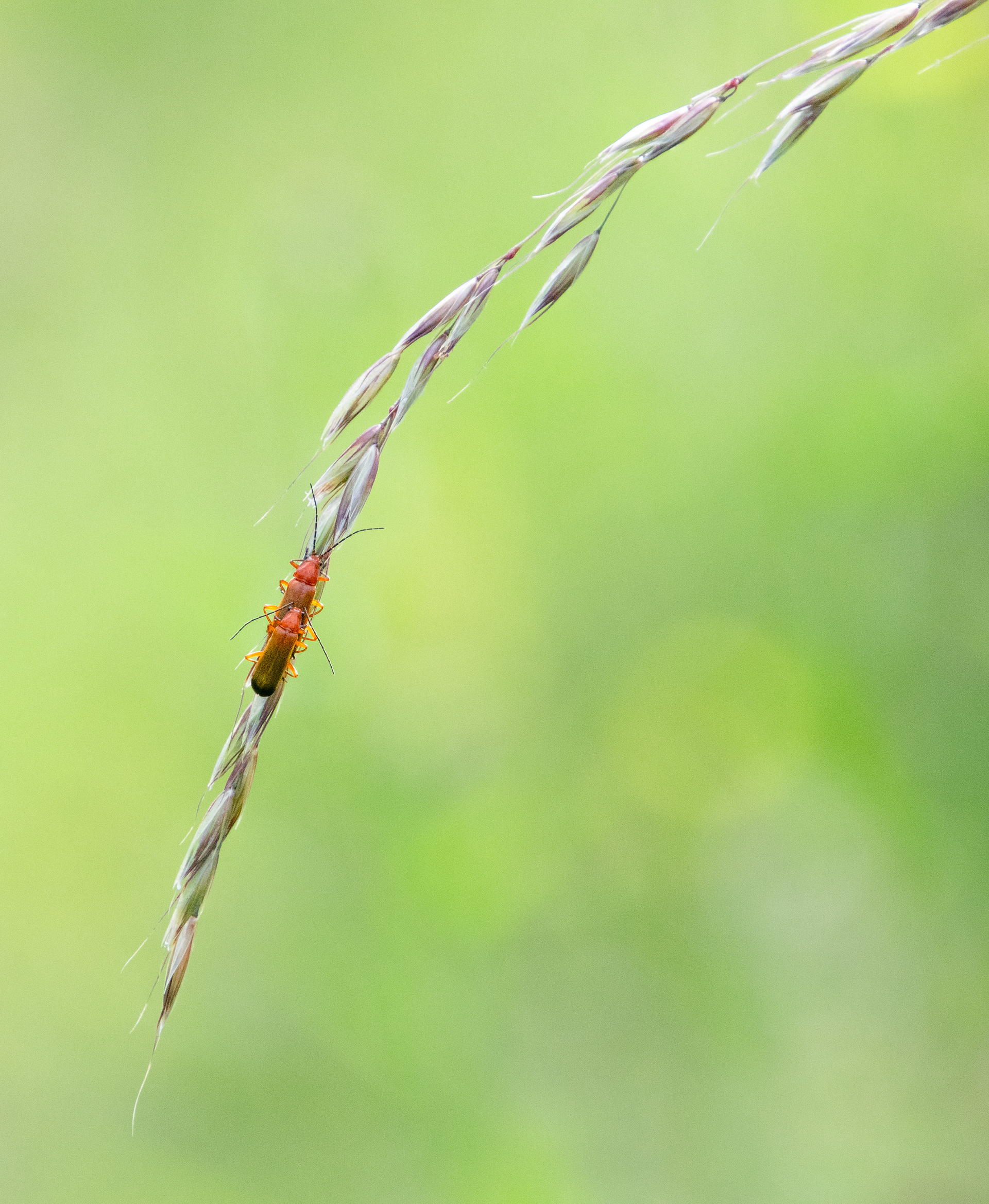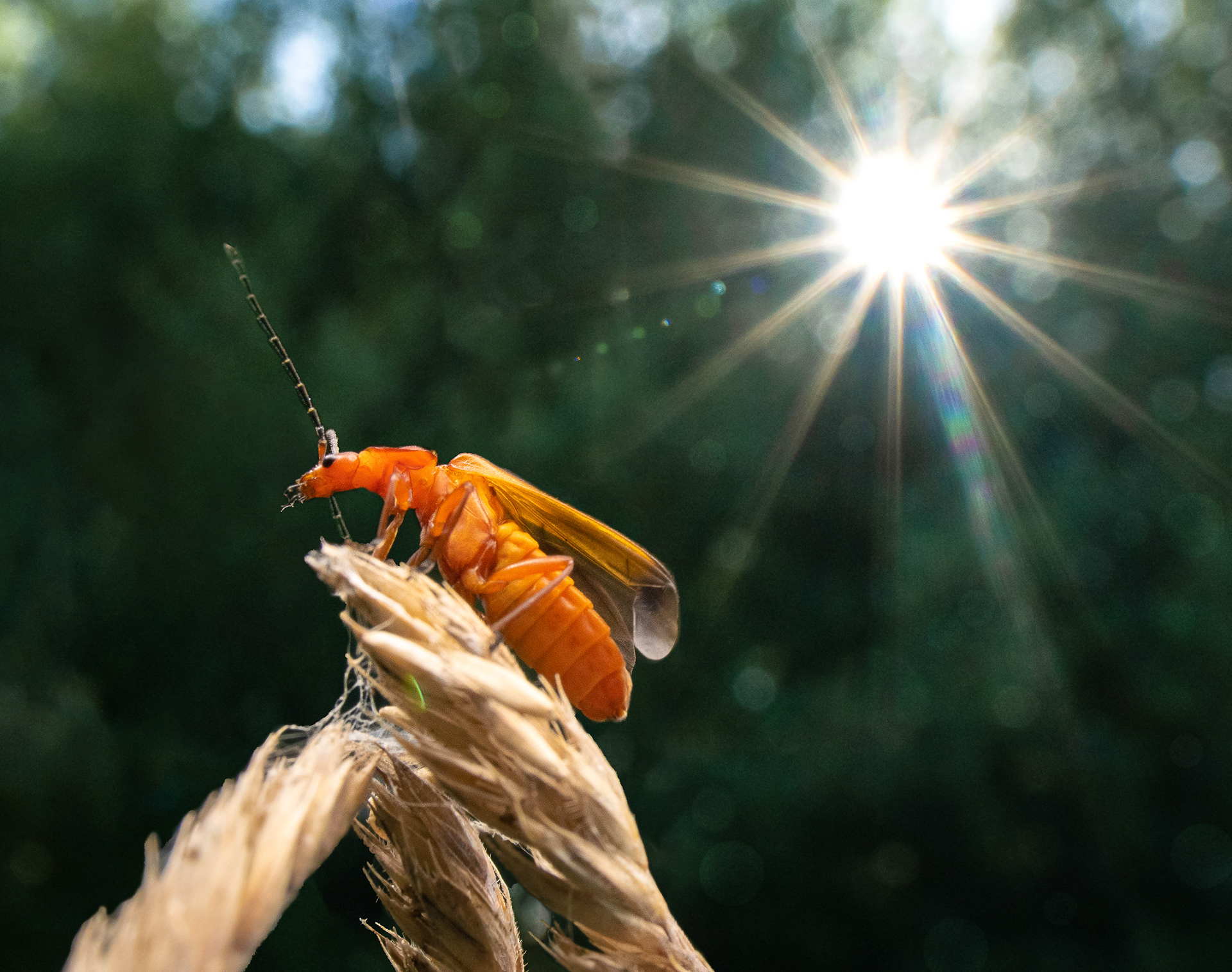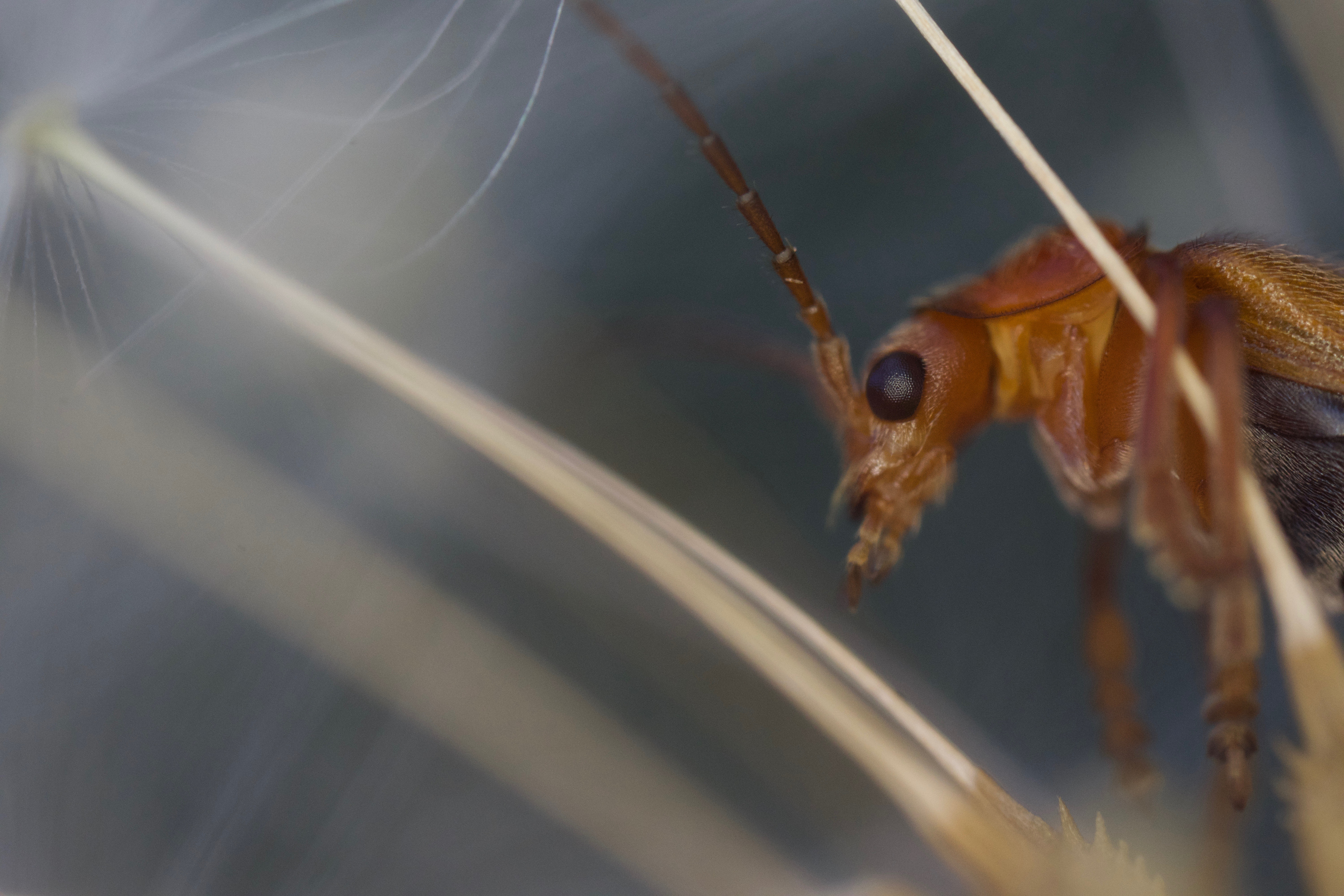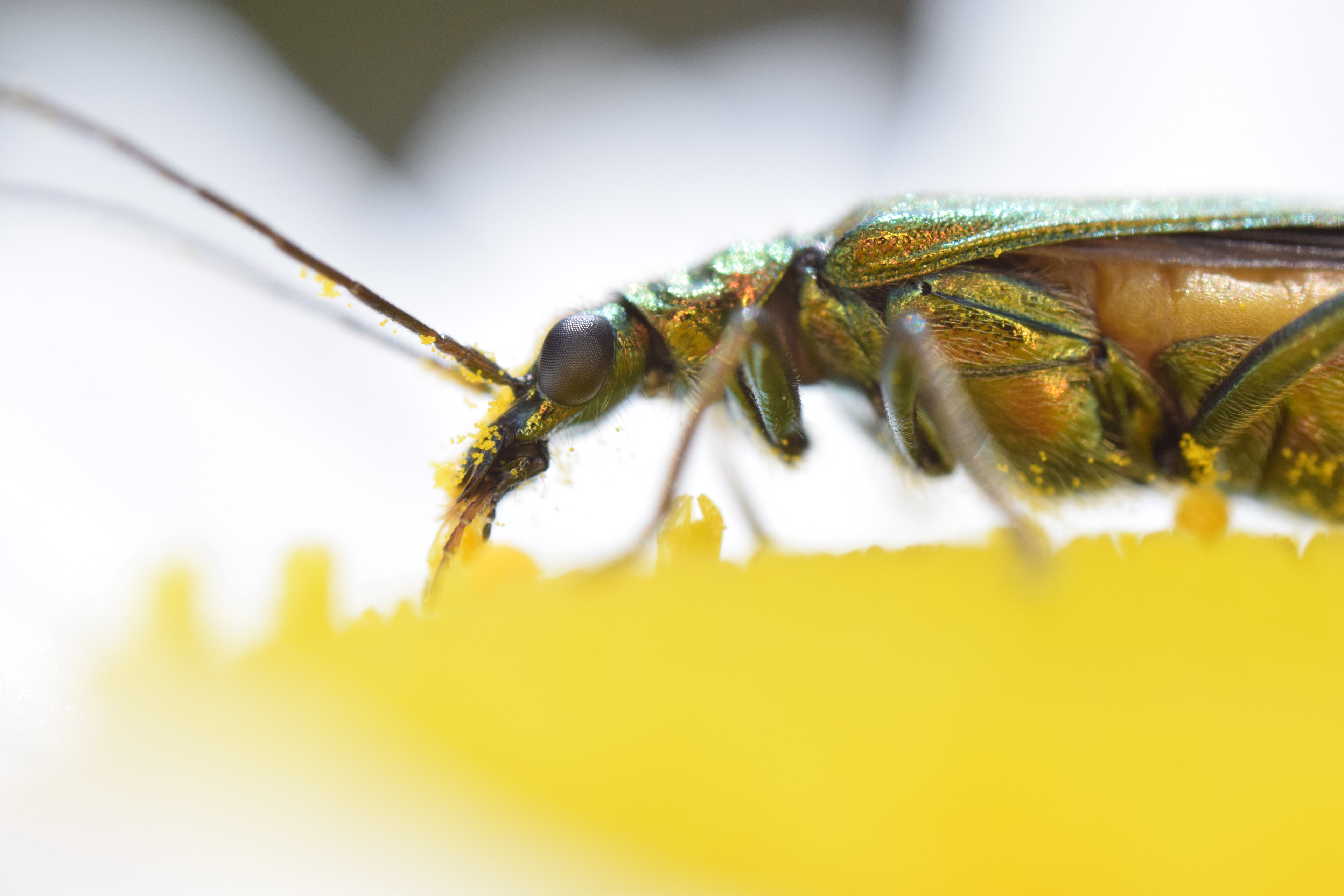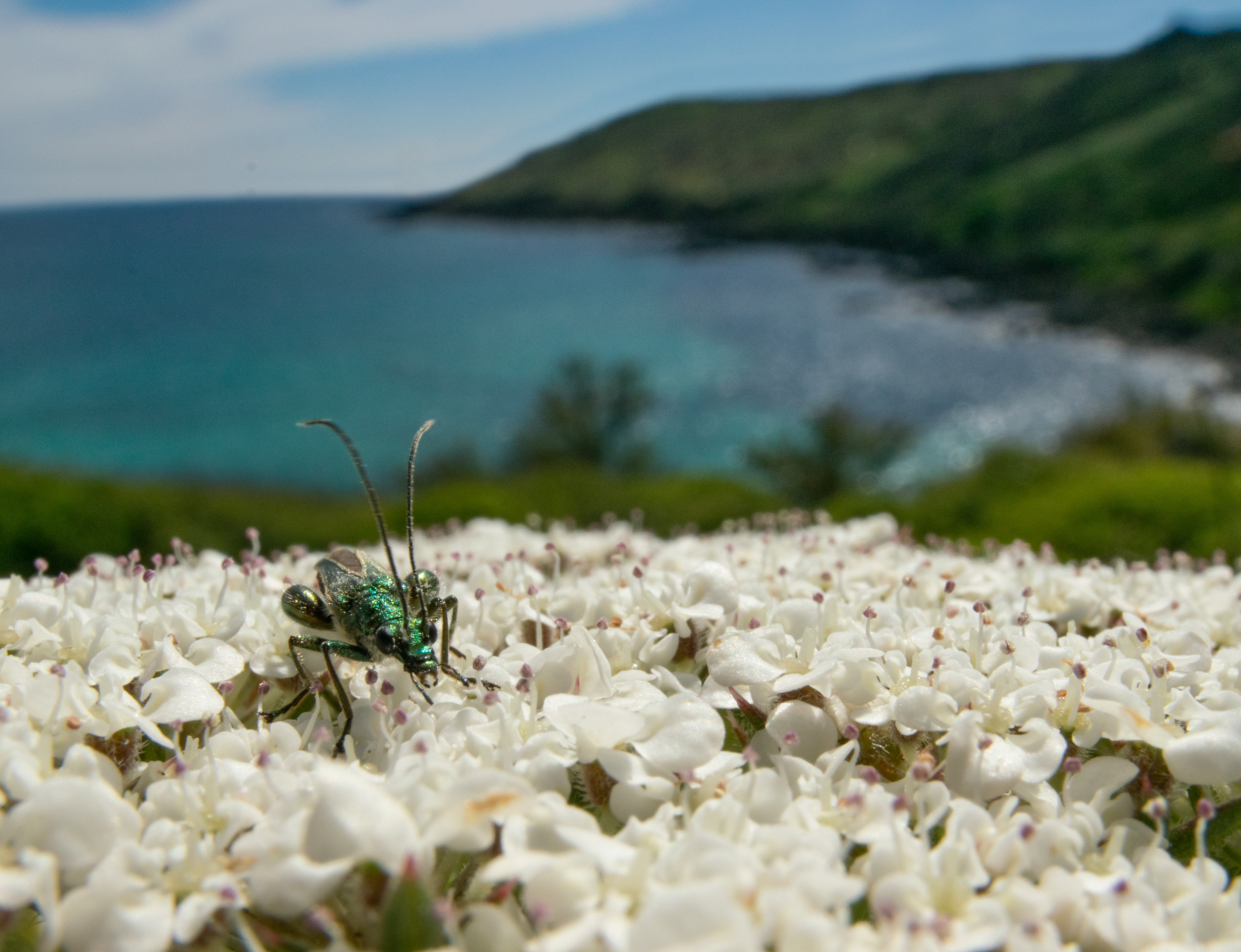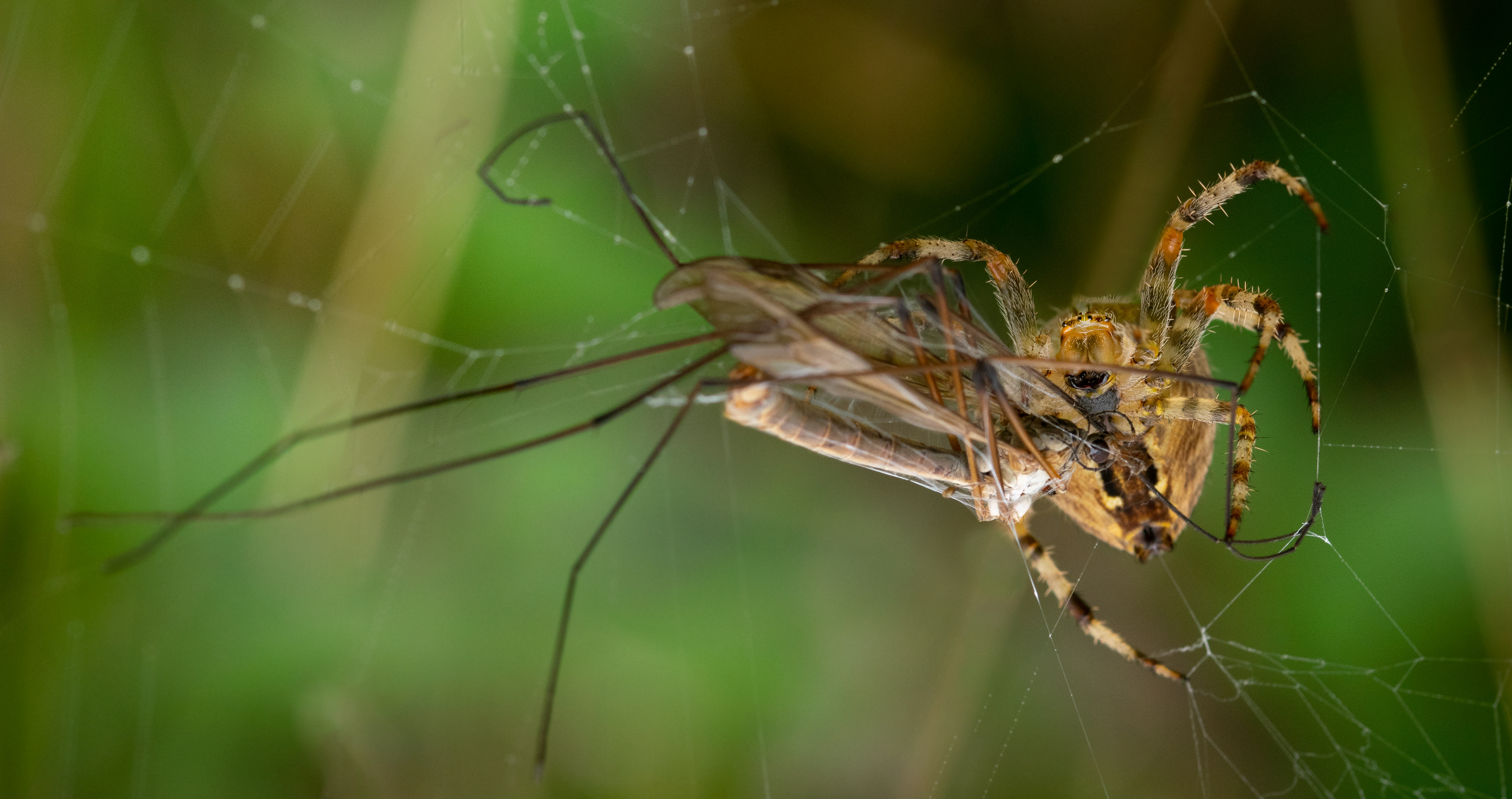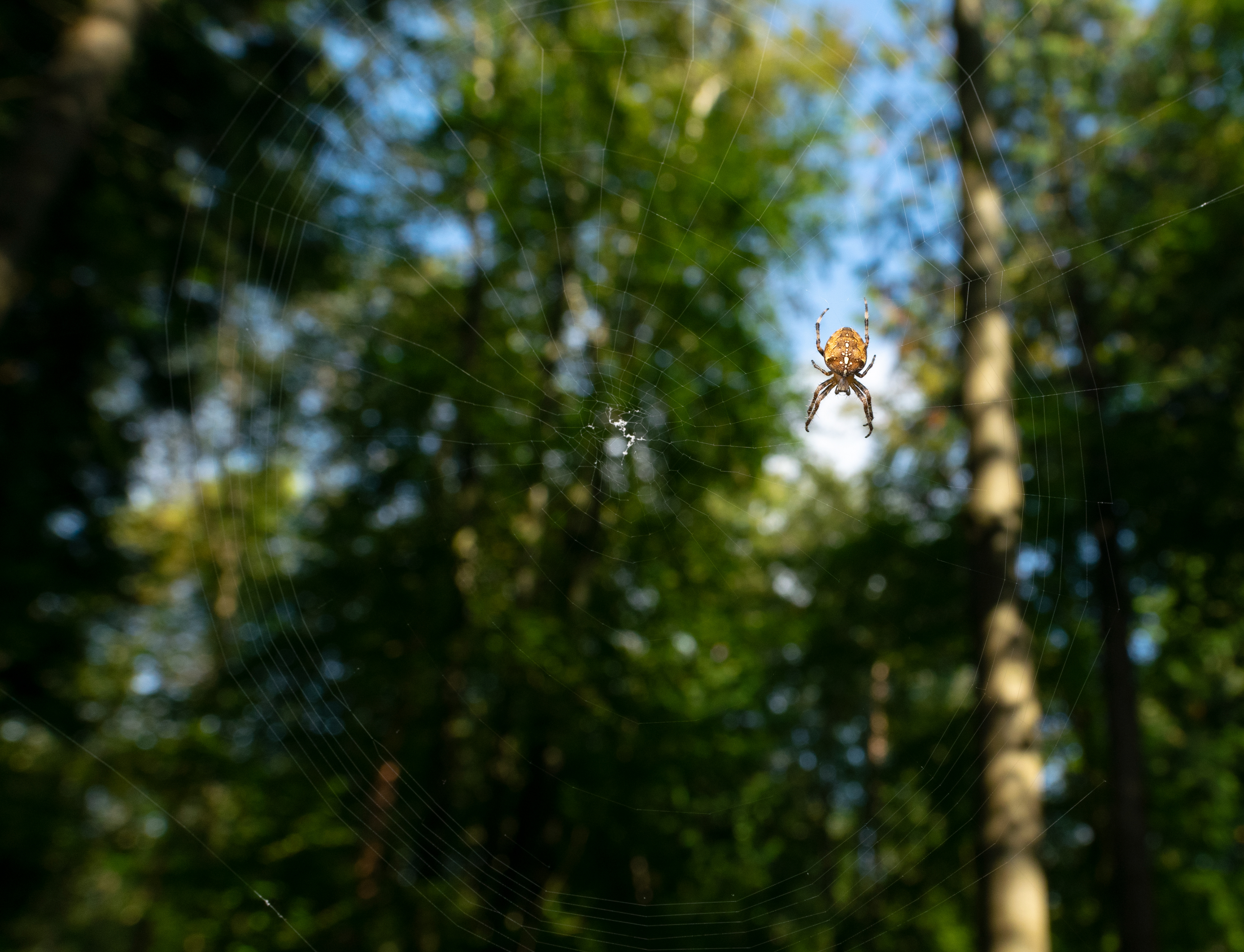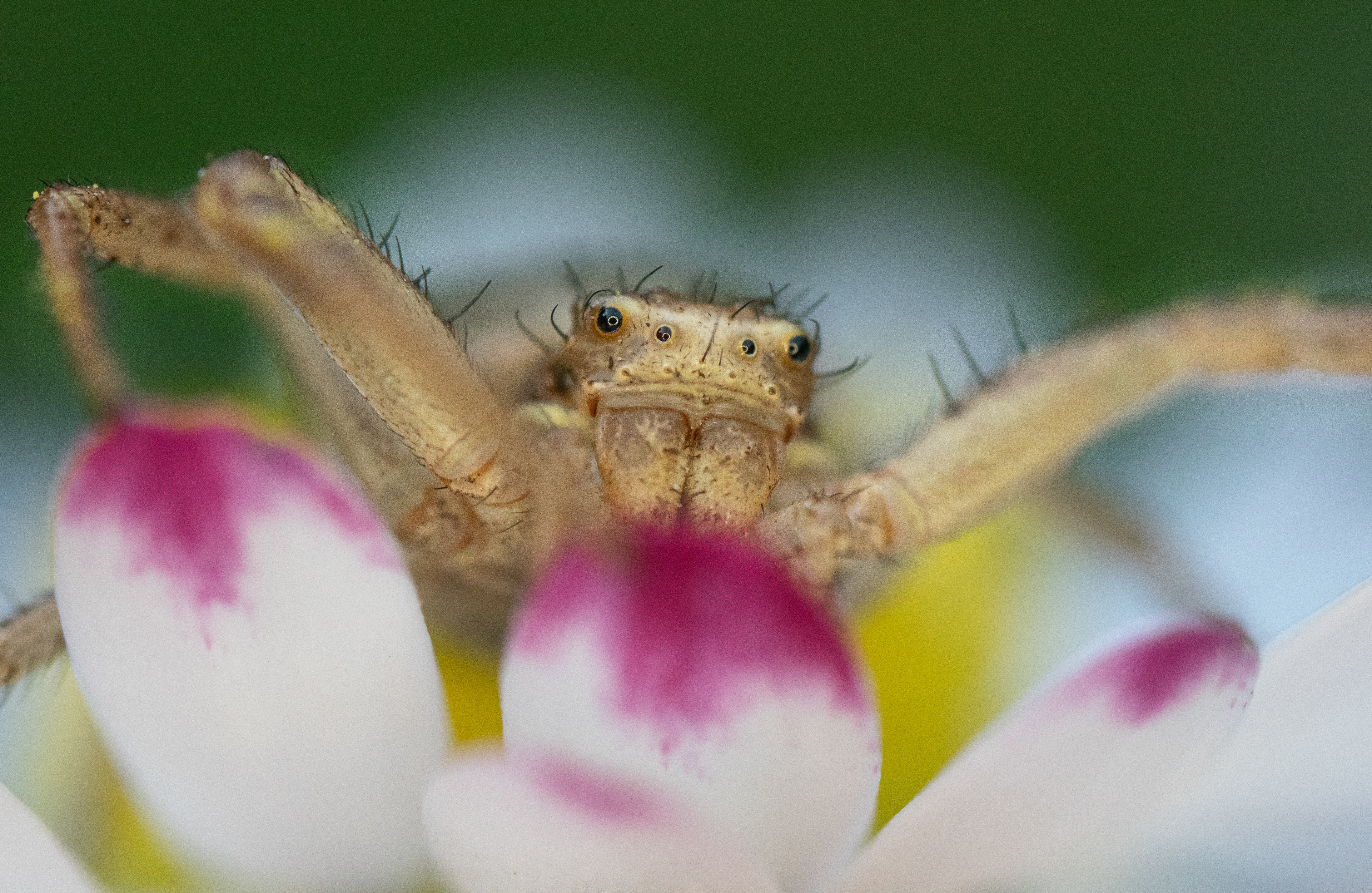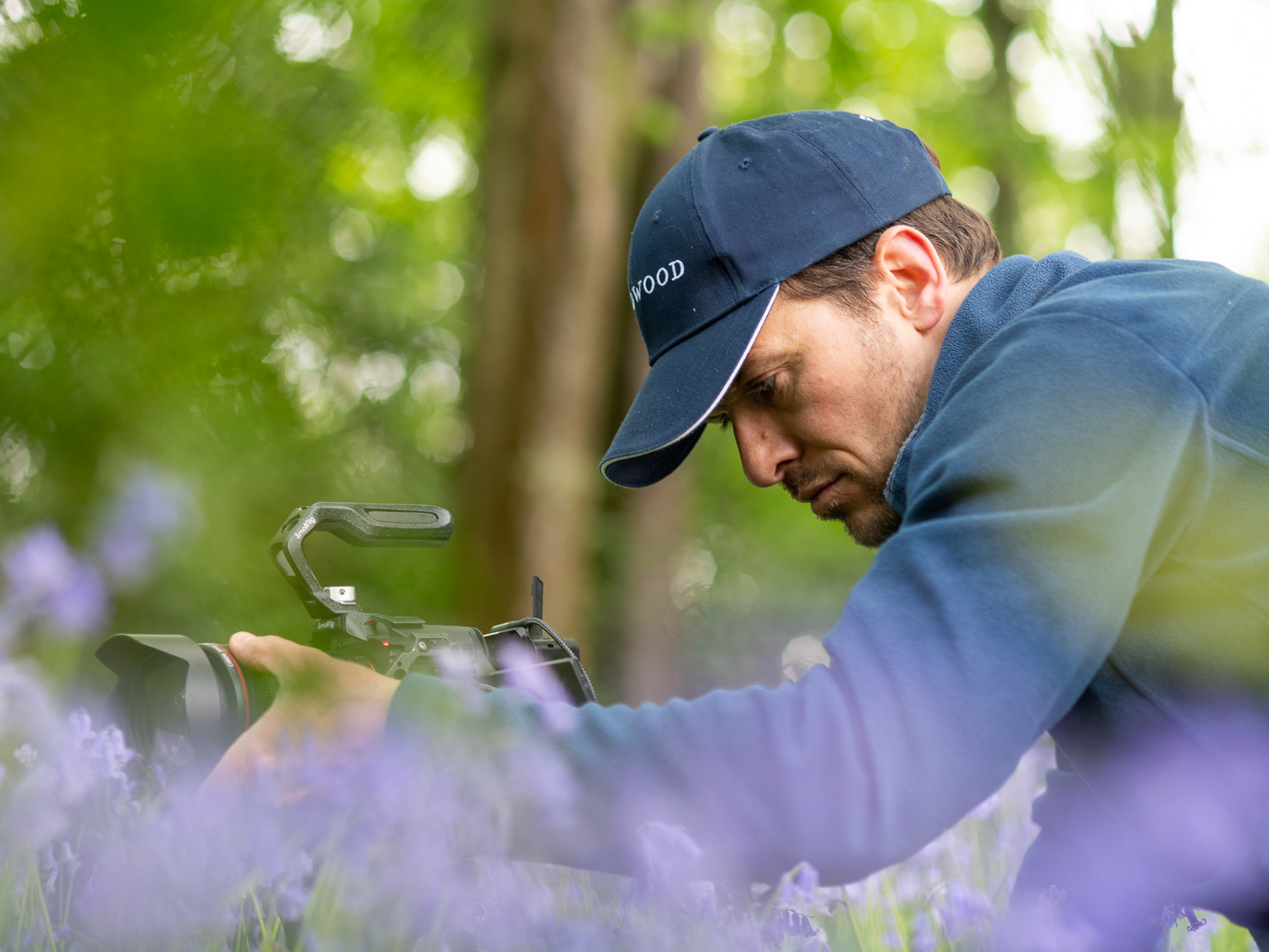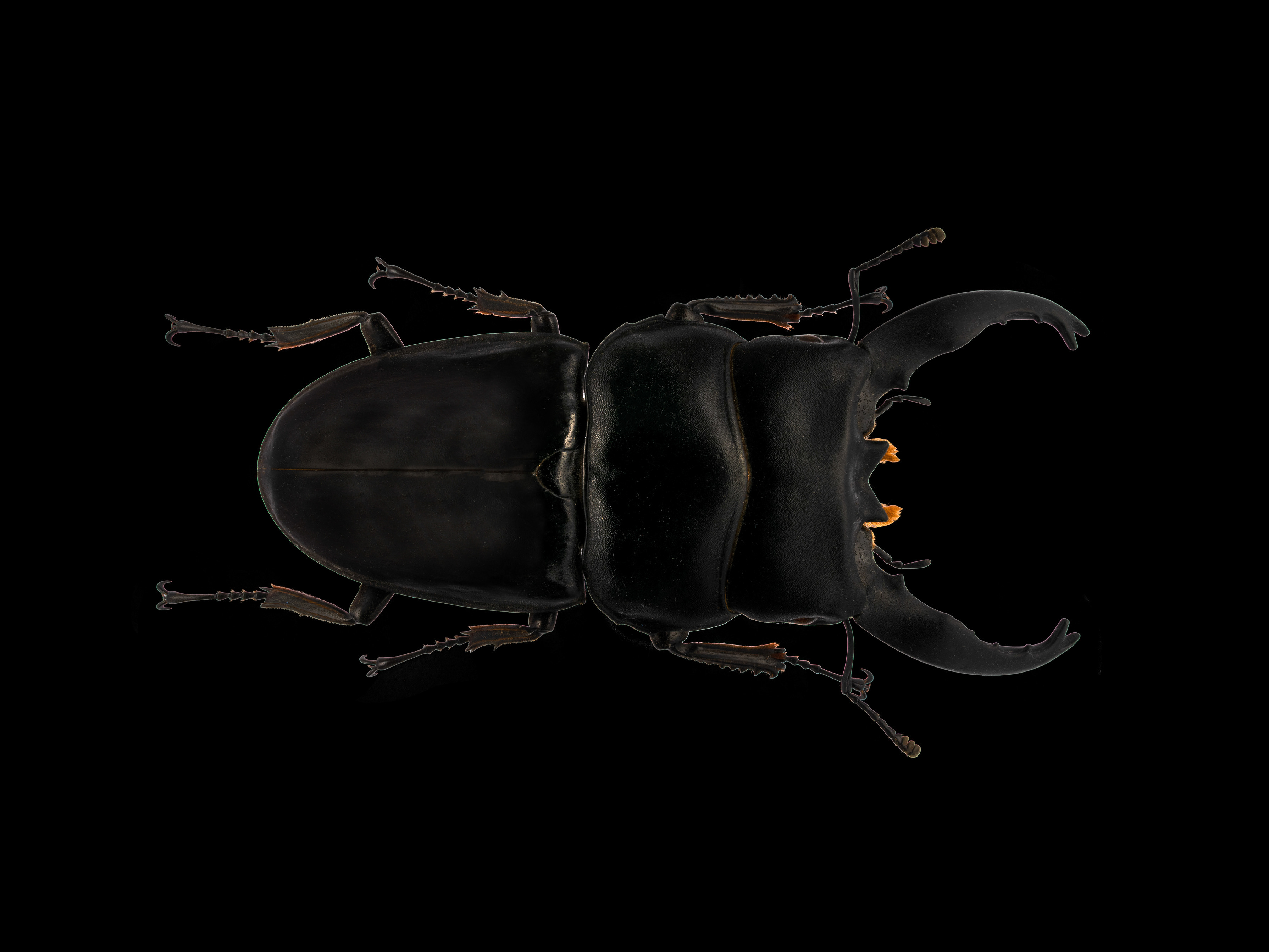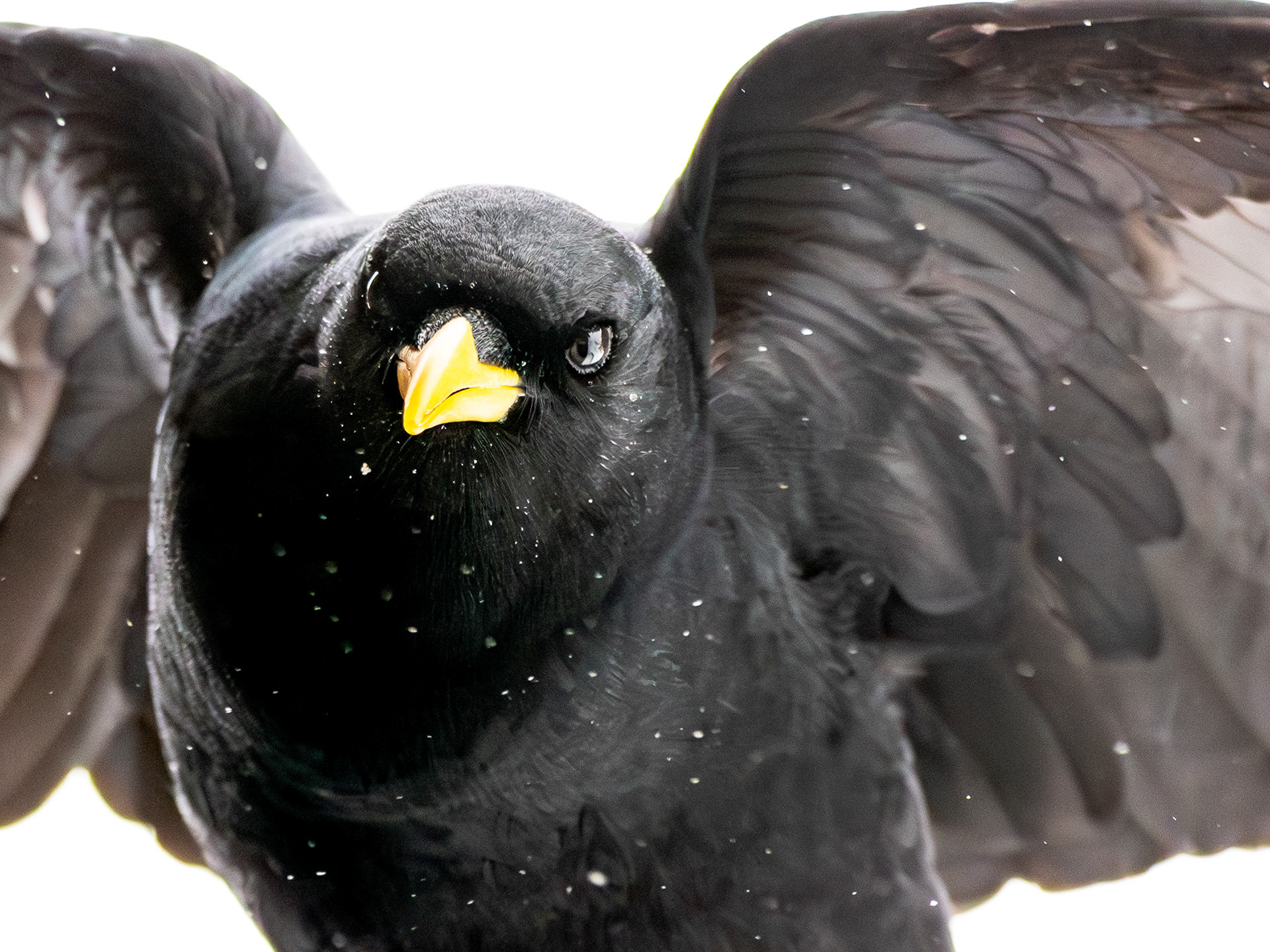(Below) A male brassy longhorn (Nemophora metallica—rock ‘n’ roll) shows off his massive antennae to a female, who looks on in what I can only imagine must be mothy amazement. Or maybe disappointment—who knows? Perhaps his antennae aren’t particularly impressive by her standards.
I spent lockdown watching these moths in a meadow near my home. They would land on nothing but field scabious. Even in high winds, they would take off, get buffeted around, and somehow—without fail—stick a landing on a scabious flower head.
It soon became clear that females laid their eggs on this plant and this plant alone. Their ability to detect it was extraordinary, almost as if its violet blooms were the only thing they could see. While females flitted between different flowers, males would rarely leave a scabious once they’d landed—no matter if they were poked, blown, or shaken (I had to find out). It wasn't hard to see why: they were waiting for the inevitable arrival of a female. When one finally appeared, a male would stand tall atop the flower, splaying his antennae over her and flicking them around in an elaborate display.
Since the antennae were absurdly long, flight was not only energetically demanding, but a small gust of wind could send a male tumbling away from his preferred meadow—away from all the eligible maiden scabious he so desired. Worse still, venturing from the safety of a flower head risked breaking an antenna altogether, which would spell disaster for his chances of mating. Much safer to stay put.
(Above) A female lays
eggs.
